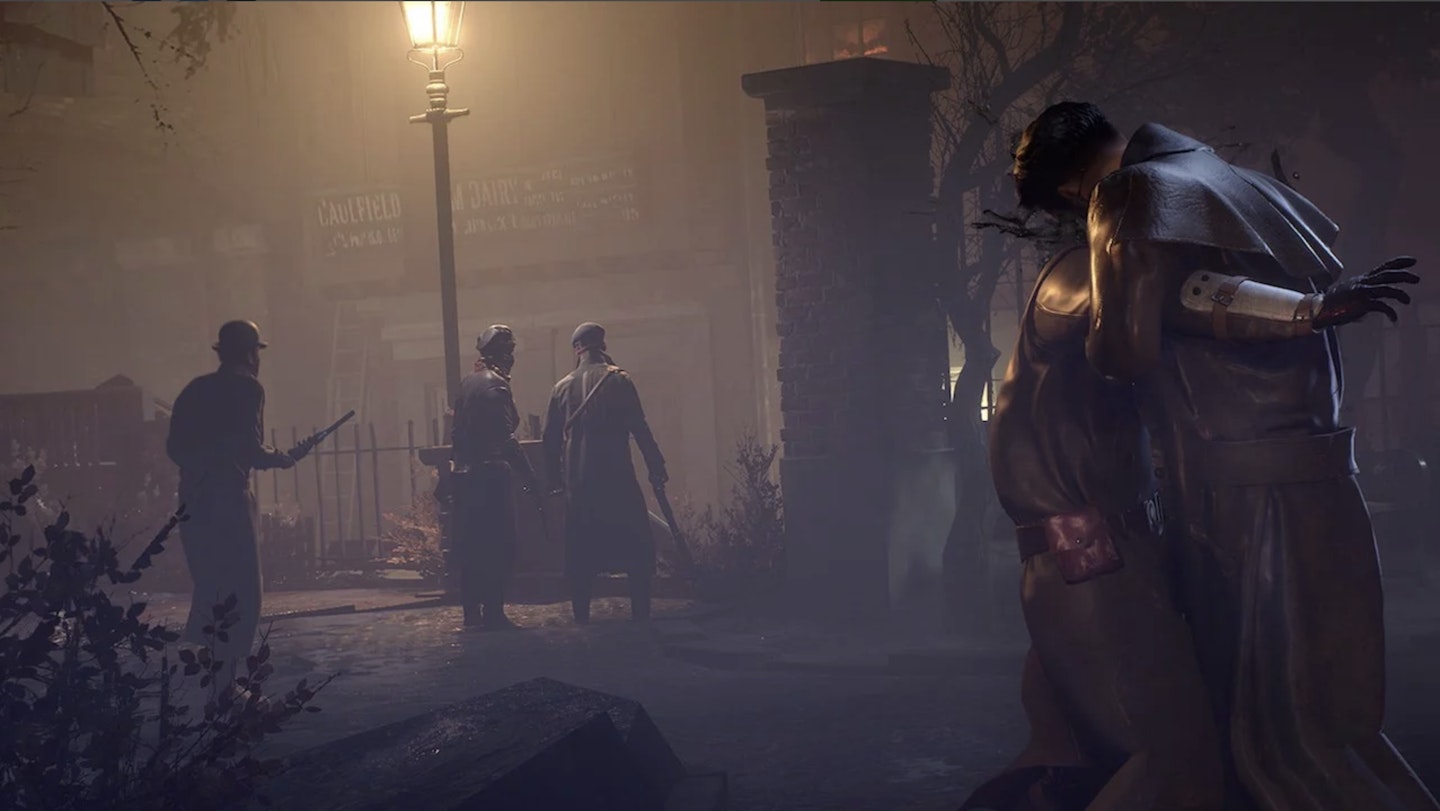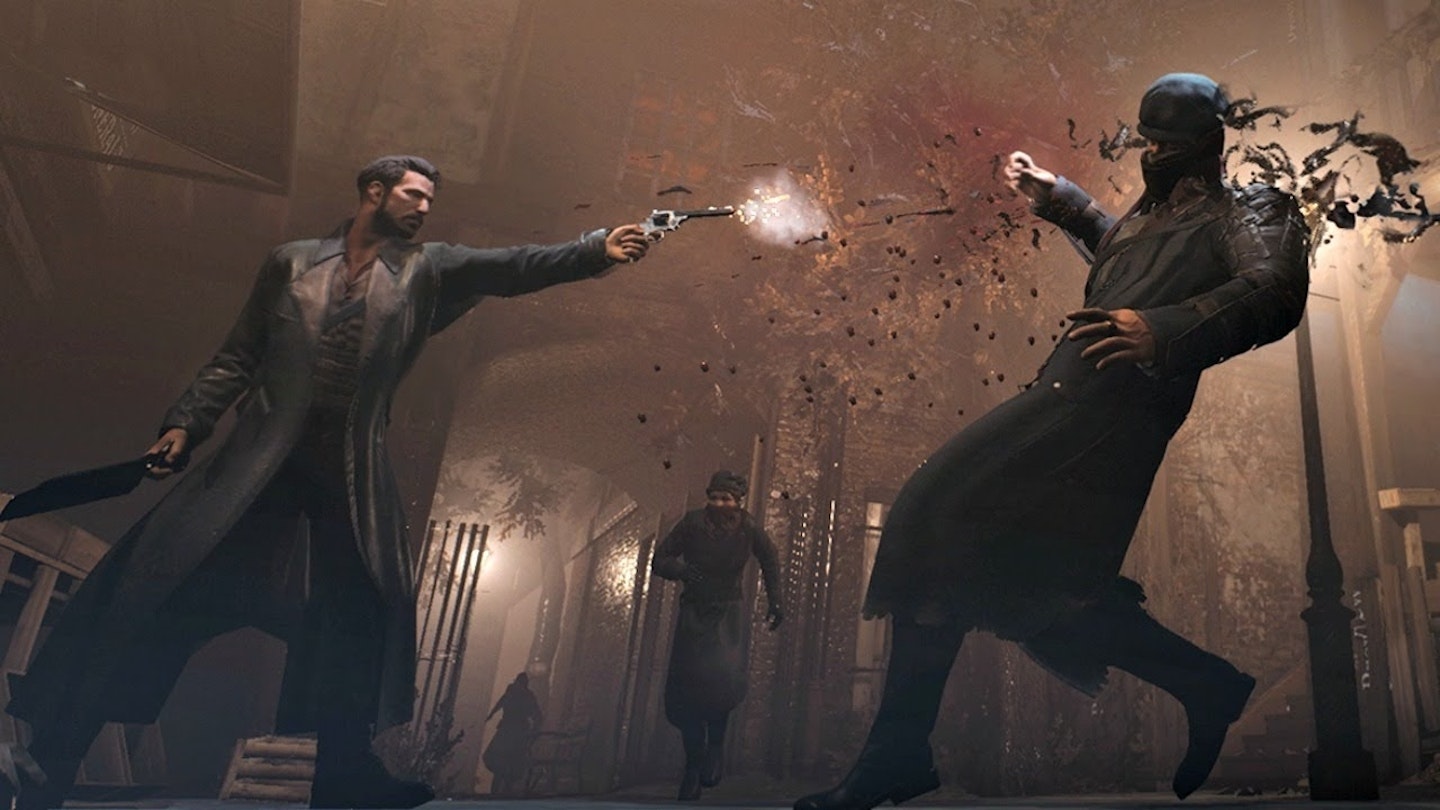Vampires, as we all know, don’t exist. However, if they did, becoming one might actually have its perks. This atmospheric, distinctly steampunk game from Dontnod, of Life Is Strange fame, offers a means of exploring the dilemmas surrounding being transformed into a powerful immortal being who must suck the blood of innocents in order to survive. And, in contrast to the point-and-click adventures that put Dontnod on the map, it offers some pretty decent action gameplay as well.

Vampyr’s action opens in a London on its knees: it’s 1918, the Great War is still raging and a Spanish flu epidemic is cutting swathes through the population. Dr Jonathan Reid, the character you play, wakes up in a pit into which countless dead bodies have been tossed. But something is badly wrong: stumbling into the embrace of his sister, who has been pounding the dangerous streets in search of him, a red mist descends, and he bites her neck, draining her blood and killing her. Thus Vampyr signals its nature as a game in which moral dilemmas will loom large.
Vampire-hunters immediately start pursuing Reid, and the game introduces its combat system, based primarily on hacking with machetes, axes and the likes, but also including guns and an absolutely vital dodge-move, in which Reid travels a considerable distance amid a blur of black smoke. Later, as you level up, you start amassing special vampire moves. Reid can consume blood to heal himself or launch both defensive and attacking moves, such as a blood-spear or a blood-shield. So-called Ultimate moves can either cause huge damage to a single target or middling damage to all targets present. All of Reid’s vampire-specific moves have a cooldown period, though.
Its evocation of a foggy, lawless 1918 London is wonderfully appealing.
Reid has three meters, for life, stamina and blood – cutely, the latter can be topped up by snacking on rats, triggering self-revulsion from Reid. Using a weapon in his off-hand (or hitting them with enough bullets), Reid can also stun enemies, opening them up for a neck-bite, which replenishes his blood store and causes damage. His vast array of moves, and the need to run away in order to replenish stamina, gel into a tactical combat system, which has to be mastered properly when you begin to encounter bosses and mini-bosses.
But Vampyr is far from being all about the combat, fun though that is. Reid soon hooks up with Dr Edgar Swansea, luckily the very enlightened Administrator of the Pembroke Hospital, just south of Whitechapel, and the only hospital operating in the area. Reid, it turns out is not just an eminent surgeon but also a specialist in blood research, and particularly the new-fangled technique of transfusions. Swansea offers Reid a post at the hospital, despite his being a vampire, and Reid gets his own room which functions as a Hideout, where he can rest, level up (improving basic attributes and acquiring new vampire abilities) and craft and upgrade weapons and remedies, which include serums that replenish Reid’s health, stamina and blood when in combat.

The overarching storyline concerns Reid’s desire to find the creature who turned him into a vampire, and all manner of clues emerge when he starts to perform missions for Swansea and others around the hospital and then extended into the four run-down nearby areas of London. Some are patrolled by the Priwen Guard, a bunch of fanatical, well-armed vampire hunters, while others are abandoned to the low-level vampires called the Skal (Reid himself is an altogether posher type of vampire called an Ekon, and he soon meets a fellow Ekon who begins to explain the implications of becoming a vampire).
There are plenty of ordinary characters to meet and converse with and, despite some spelling mistakes in the subtitles, Vampyr’s dialogue is good (the odd clut-scene cliché aside), and conversing with the locals throws up side-missions and crucial information. Reid can heal sick characters he meets. But he can also use his new-found vampire powers to mesmerise them, lead them to hidden areas and “Embrace” them, which drains them of their blood and kills them. The latter brings about large injections of Experience Points, which come in very handy indeed.
But the more innocent victims Reid claims, the further into lawlessness and despair the surrounding area will plunge. Reid kills plenty of Priwen Guard in the course of the game, since they attack him automatically, along with any vampires he comes across. But Vampyr cleverly gets you to think about the consequences of killing innocents, and how that conflicts with Reid’s desire to save and heal them. Still, sometimes you have to grind a bit, and there’s always an exotic vampire skill you fancy either acquiring or upgrading.
The end result is a complex, atmospheric and very enjoyable game. Its evocation of a foggy, lawless 1918 London is wonderfully appealing, and its mix of agreeably responsive and tactical combat and investigation blends in a judicious manner.

It’s not without faults – it could really do with a fast-travel system (although the map is on the small side for a modern game) that, at the very least, would allow you to flit between Hideouts. It probably doesn’t punish you as much as it should for dying, leaving you with any XP you acquired since the last auto-save. And at times – especially when you come up against bosses and die a few times – you end up having to schlep miles back to the nearest Hideout in order to craft essential items.
But for those who like their games single-player, thought-provoking, original and atmospheric, Vampyr very much fits the bill. Tricky moral quandries, an absorbing period setting and the curious addition of making you rather wish you could try being a vampire yourself.
